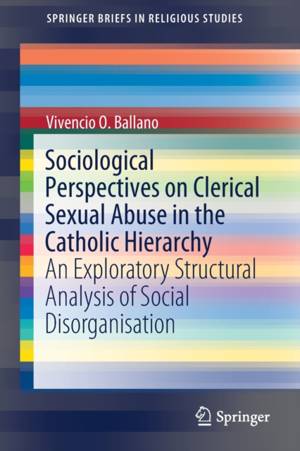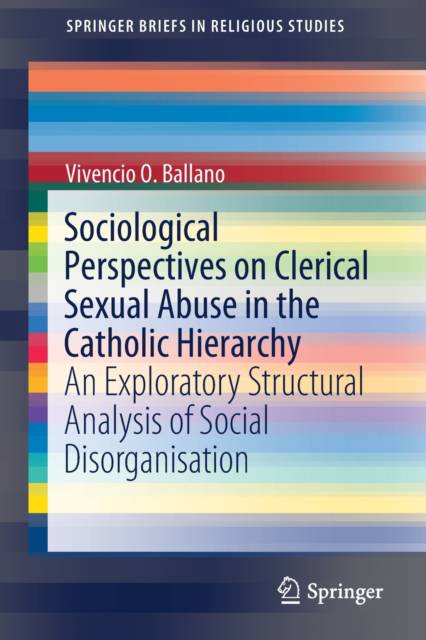
Door een staking bij bpost kan je online bestelling op dit moment iets langer onderweg zijn dan voorzien. Dringend iets nodig? Onze winkels ontvangen jou met open armen!
- Afhalen na 1 uur in een winkel met voorraad
- Gratis thuislevering in België vanaf € 30
- Ruim aanbod met 7 miljoen producten
Door een staking bij bpost kan je online bestelling op dit moment iets langer onderweg zijn dan voorzien. Dringend iets nodig? Onze winkels ontvangen jou met open armen!
- Afhalen na 1 uur in een winkel met voorraad
- Gratis thuislevering in België vanaf € 30
- Ruim aanbod met 7 miljoen producten
Zoeken
Sociological Perspectives on Clerical Sexual Abuse in the Catholic Hierarchy
An Exploratory Structural Analysis of Social Disorganisation
Vivencio O Ballano
€ 82,45
+ 164 punten
Omschrijving
This book offers an exploratory analysis of the major factors that contribute to the social disorganisation in the Catholic hierarchy as a clerical community, facilitating the persistence of clerical sexual abuse in the Catholic Church. Using social disorganisation theory as an overall theoretical framework, supported by secondary literature and qualitative data, it examines the social bonding and social control system in the hierarchical community, mandated clerical celibacy, as well as the lay participation in the monitoring and sanctioning of clerical abuses and their consequences to clerical behaviour. The Catholic Church prides itself on being a unified community of clerics under the Pope who shares the one priesthood of Christ. But ongoing clerical sexual scandals and the inability of bishops to adequately manage clerical abuse cases has engendered skepticism as to whether the Catholic clergy is indeed a cohesive and socially organised community that deters clerical abuse.To this end, this book explores the three structural areas that contribute to the social disorganisation of the Catholic hierarchy in policing clerical behaviour, namely: the lack of social interaction and cohesion of clerical life at the various levels of the hierarchy, the institutionally-mandated celibacy that deprives clerics of familial support and networks and direct social control of behaviour against sexual abuse, and the lack of lay authority and participation in the official Church governance and surveillance of priestly behaviour. This book invites Church authorities, academics, and lay leaders to understand persistent clerical sexual abuse empirically from a sociological perspective, and recommends structural reforms that might enhance the social network and social control systems of the Church.
Specificaties
Betrokkenen
- Auteur(s):
- Uitgeverij:
Inhoud
- Aantal bladzijden:
- 97
- Taal:
- Engels
- Reeks:
Eigenschappen
- Productcode (EAN):
- 9789811388248
- Verschijningsdatum:
- 2/10/2019
- Uitvoering:
- Paperback
- Formaat:
- Trade paperback (VS)
- Afmetingen:
- 156 mm x 234 mm
- Gewicht:
- 172 g

Alleen bij Standaard Boekhandel
+ 164 punten op je klantenkaart van Standaard Boekhandel
Beoordelingen
We publiceren alleen reviews die voldoen aan de voorwaarden voor reviews. Bekijk onze voorwaarden voor reviews.











